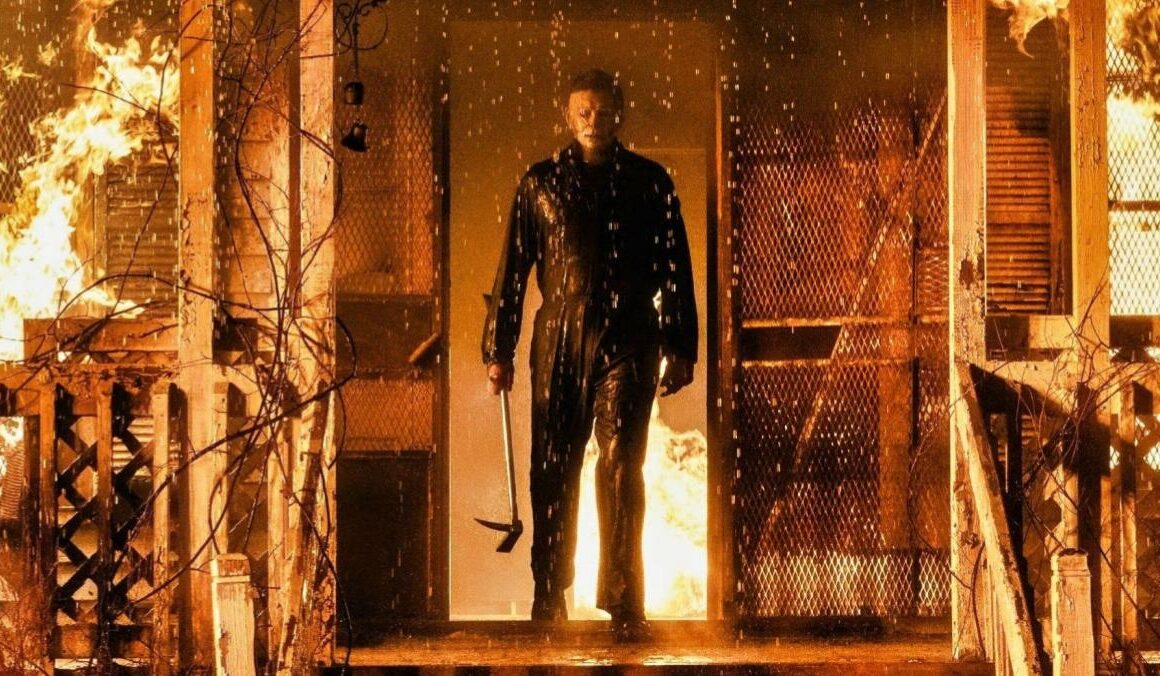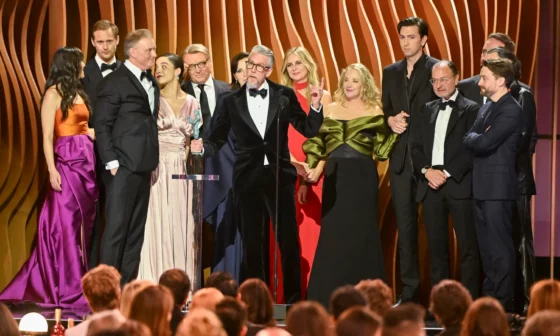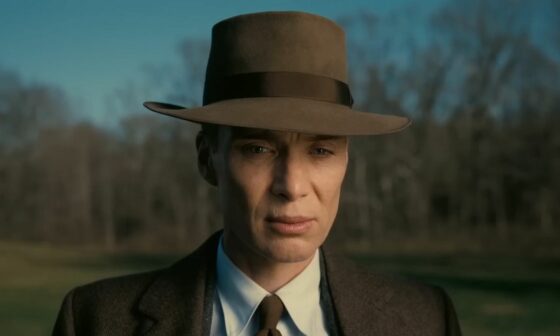David Gordon Green‘s 2018 version of Halloween was successful in subverting the tropes of both the slasher film and John Carpenter‘s 1978 original masterpiece, but Halloween Kills, the sequel and second in a trilogy that will conclude next year with Halloween Ends, suffers from the same problems many of the previous Halloween sequels also struggled with.
The film surely annoys most Halloween superfans in its opening scene by screwing with the timeline of the original film.
The fabulous ending where The Shape disappears and we see the rooms he’s infiltrated with only his breathing on the soundtrack – he could be anywhere, and the supposed safety of the suburbs is just a charade – is completely negated; turns out he was just down the street getting captured.
It’s humorous that Michael Myers is credited as ‘The Shape’ in the opening credits of this installment, as he is about as far from the devil-eyed entity of pure evil that quietly drifted through empty suburbia in Carpenter’s original, and is now closer to the imitators with bad masks that dragged down many of the previous Halloween sequels.
No longer just a man with “the devil’s eyes”, he’s now an unbeatable machine who kills more people in the first 15 minutes here than he does in the entirety of the original movie, and the eerily quiet, parent-less Haddonfield of ’78 – while only that empty for budgetary reasons – is now a town filled to the brim with people, all with a connection to Myers in some way.
The film decides to spend most of its runtime with them instead of the Strode women, whose first and secondhand trauma is what anchored the 2018 film so well. Instead we have to spend time with Anthony Michael Hall – playing an adult version of the boy Laurie Strode babysat in 1978 – and other characters with tangential relationships to Myers and Haddonfield.
There’s an attempt to expand on the idea that the town has been essentially haunted by Myers for 40 years, but these characters from Myers’ past are just as quickly dispatched as they are introduced. Despite the film scrambling to connect them to the infamous night 40 years ago, it’s hard to see them as intricately connected to Michael as Jamie Lee Curtis‘ Laurie is.
The depiction of Laurie’s trauma in the 2018 film worked because not only did it feel real and generationally linked to her daughter Karen (Judy Greer) and granddaughter Allyson (Andi Matichak), but even though this series has ignored every previous sequel, as an audience we did sit through them.
So Laurie has been with us, experiencing this in some way, for those 40 years. The new characters have not.
Expecting us to deeply care about their connection to Michael was naïve, but also a natural problem with a sequel like this, which must get bigger; the complete antithesis to what makes Halloween great.
There’s also a distinct effort to make this installment “more” than a slasher, with the film’s depiction of a scared mob yelling “evil dies tonight!” and hunting down an escaped mental patient who they mistakenly think is Myers an obvious parallel to real life. But this lazy admonishment of mob justice is not anything new and only sidelines Karen Strode from the main plot.
The film also has little to no tension almost solely because we already know another sequel is coming next year. So, for example, when the town finally surrounds Myers with weapons and plan to finish him off, it’s hard to imagine any audience member truly thinking this is the end; instead they’re merely wondering how the film will write Myers out of this predicament.
Green’s 2018 film didn’t have this problem nearly as much, as the sequels had not been commissioned at the time, so Myers being trapped in a flaming basement at least offered a chance of a potentially cathartic ending.
That he escapes in one of the opening scenes isn’t surprising, but it’s quickly explained with flimsy reasoning, even though Myers later survives multiple gunshots to the chest. The film can’t quite decide if he’s someone whose escape from a basement needs to be explained logically, or if he’s a superhuman monster impervious to anything the town throws at him.
This conundrum is also present in how Laurie and others pontificate about how Michael is more of an idea than a tangible thing – “the more he kills, the more he transcends into something else impossible to defeat. Fear. People are afraid. That is the true curse of Michael.”
If the above quote was related to Laurie living with this trauma for her whole life, while making her family’s lives trickier by bringing this fear onto them, this would be good – except that is exactly what the 2018 film was about.
Trying to patch this idea onto the trauma of the whole town when it was one incident that occurred 40 years ago when most of them were probably not alive and/or not living here doesn’t track like the film hopes it would.
In an attempt to feel like more than a Halloween film, and more than a slasher, Halloween Kills stuffs itself with too many plotlines and retroactively adds characters to Carpenter’s 1978 original to expand the universe.
Ironically, this glut of characters and story make it feel miles away from the original Halloween it so clearly respects. Had it kept it simple and leaned on its creative kills and impressive gore, it could have been a worthy successor to both the 2018 and 1978 versions. Instead, it feels like an overstuffed placeholder before Halloween Ends arrives next October.
#Peace.Love.HalloweenKills









